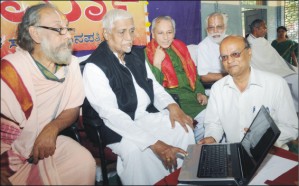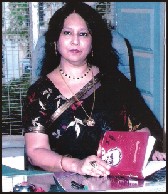
Budding danseuse Anoosha Sri’s story is special for reasons way too many. A dancer, actor, singer, swimmer and a pianist that she is, Anoosha is aptly gifted, well-trained and highly intelligent. She has several good endowments all in the bag and no wonder; her feats are big as the girl is still all of 12!
Though lass of many hats, we wish to tell you about one special feat of Anoosha’s today. The girl is all set to present her Bharatanatyam Rangapravesha. Wondering what is special about it, as way too many of them often present Rangapravesha performances? Anoosha’s Rangapravesha is an achievement in itself as the girl has been tutored through Skype — the widely used voice-over-IP service and she has gained expertise to reach up to the stage of performing a Rangapravesha in the beautiful traditional Indian dance form in just a year’s time. Having decided to learn it this unique way as she happens to be a resident of Louisville, USA, Anoosha’s classes began through online training by noted city-based dancers Badari Divya Bhushan and Dr. Anjana Bhushan last July.
“It wasn’t easy at all,” says Bhushan, talking of his favourite Skype student who is here to meet him in person for the first time, ever since he began training her last year. “My academy has been tutoring students via Skype since a few years now. We tutor about 16 students from countries like Berlin, USA, Dubai and Australia of whom, Anoosha is one who is excellent and my favourite. I never agree to teach students via Skype easily as it’s strenuous for the student as well as us tutors since we need to adjust to each other’s country’s timings,” explains he, “But before I decide to say yes, I interview the student over phone. And when I did it with Anoosha, I found that she is really interested in learning and had perfectly done her homework about the art and was not wanting to learn the dance just for the sake of gaining a so called degree in Bharatanatyam, which many receive but do nothing than simply add it to their personal bio-data.”
According to him, Anoosha who was already trained in the basics of Bharatanatyam by tutors Akila Iyer and Smitha Paily at the US seemed to be really interested in learning it with momentousness and they thus began her classes and that too in Tamil (their mother tongue) during weekends since July last year. Such was her keenness that in just a few months’ time, Anoosha requested Bhushan to tutor her for more hours, jut to expertise the skills better, says the tutor. And slowly with time, she picked up several skills to perfection all by Skype which was amusing to watch and she even performed at a couple of events in the US by learning exclusive moves for different dance shows, he adds.
But how is it that she developed such keen interest in this Indian art though born and brought up in the USA? “I love this dance form the most as I believe it is the hardest one to learn as well as to be executed,” explains the little girl who is getting all geared up to present performances at several places in India after her Rangapravesha in Bangalore this weekend. Anoosha is here exclusively for these performances along with her parents Srinivasa and Mayura, both engineers at the USA.
Talking of her achievements, they explain: “It was at the age of 3 that she first performed on stage. She sang at an event. But we always saw that she loved dancing as she used to dance for every music that played on TV. And we thus decided to get her trained. However, we wanted her to learn the same more precisely under more able guidance and that is when we came across this online training by Bhushans which we took to. We are extremely happy she has learnt so much from them in such a short period of time.”
And their happiness about their child’s achievements knows no bounds as dance is not the only thing she excels in. Apart from this, Anoosha is a talented pianist who has been part of an International Piano Composition Contest and was rated excellent for her composition, she is well-trained in both Karnatak and Hindustani Classical music, is excellent at academics because of which she skipped two grades once she joined school and she is a prize-winning essayist and the 12-year-old is a member of the National Junior Honour Society, Donna Wilkinson Chapter, too. “All her teachers at her schools too are extremely proud of her back in the US, which makes us feel wonderful about her,” gushes Anoosha’s mom who can go on and on about her little daughters achievements with excitement brimming in her eyes.
You can watch her sway in the traditional dance form at the Guruvandana programme to be held at Jaganmohan Palace in Mysore on July 25 from 6 pm onwards. —AN
Anoosha’s feats: 2012-2014: Member of the National Junior Honour Society, Donna Wilkison Chapter
2014: Won Daughters of the American Revolution Essay Contest; Participated in the Tuttle Memorial Music Competition at Cleveland, USA.
2013 and 2014: Won an honourable mention and rated superior for her composition in International Piano Composition Contest.
2013: Value of Life Award Essay Contest winner; Invited to the grand recognition ceremony at Duke University USA, based on ACT Test Scores as part of the Duke Talent Identification (TIP) programme.
2010-2013: National Piano Playing Auditions – National Member.
2010: Won Kentucky Tamil Sangham Tamil Competition.
source: http://www.starofmysore.com / Star of Mysore / Home>Feature Articles / July 20th, 2014






